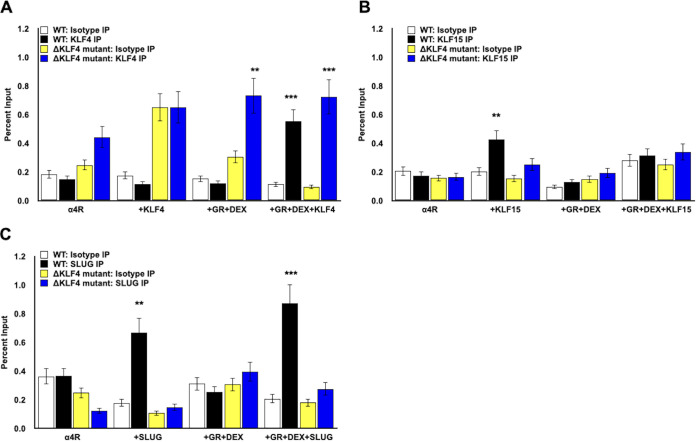FIG 6.
Chromatin immunoprecipitation with KLF4, KLF15, PLZF, and SLUG in Neuro-2A cells transfected with wild type or ΔKLF mutant. (A to C) Neuro-2A cells were grown in MEM containing 2% charcoal-stripped FBS and transfected with wild-type pα4R construct or pα4RΔKLF4 construct (1.5 μg DNA). As denoted, samples were cotransfected with the GR expression plasmid (3 μg DNA) and/or a plasmid expressing KLF4, KLF15, or SLUG (1.5 μg DNA). To maintain the same DNA concentrations in each sample, empty vector was added to samples as necessary. At 24 h posttransfection, cells were treated with DEX (10 μM) where indicated. At 48 h posttransfection, cells were formaldehyde cross-linked and harvested. ChIP was performed as described in Materials and Methods using KLF4 (A)-, KLF15 (B)-, or SLUG (C)-specific antibodies or the isotype IgG control. Target DNA was amplified by PCR using ICP4 forward and pGL4.24[luc2/minP] reverse primers (Fig. 5A), generating a 274-bp product. DNA was detected in agarose gels stained with ethidium bromide. Individual bands were quantified using Image Lab software and presented as a percentage of the input sample, which represents approximately 13% of the cell lysate used for each sample. Data presented are the means from three independent transfection experiments. Asterisks denote a significant difference between the protein-specific antibody and the respective isotype control (*, >0.05; **, >0.01; ***, >0.001). Student’s t test was performed to determine significance.

